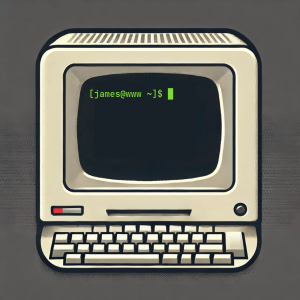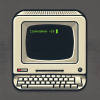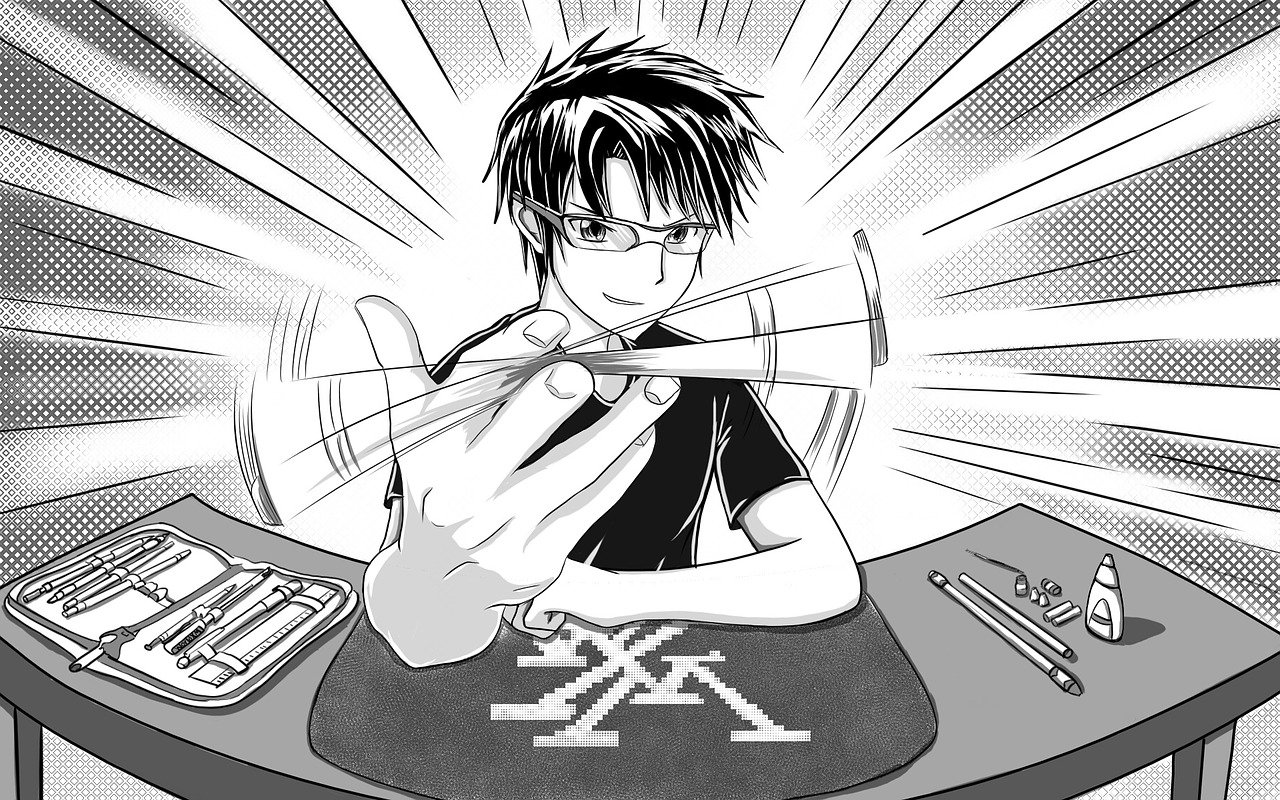(Image by Willian Yuki Fujii Memmo from Pixabay)
This article was written by James North and is made available under a Creative Commons Attribution-Non-Commercial-Sharealike 4.0 International License. Share it and build on it, but don't exploit it for commercial purposes.
Read the license.
If you don’t know what “scanlation” is, allow me to remedy that. Let’s talk about it as it applies to Japanese manga. It’s the process of taking a physical manga volume, scanning it to bring it into the digital realm, and then translating the digital version of the manga. Although, the translation part doesn’t always happen. Sometimes it’s just about getting a digital version.
This article is not intended to be a guide to the very involved process of scanlating manga; just an overview. I want to give you an idea of all the work that goes into scanlating manga. And I’m going to tackle it from the perspective of an unauthorised scanlation team, rather than from the perspective of an authorized scanlation team.
The first reason I’m doing this is because unauthorized teams share their knowledge much more freely. There are plenty of guides out there from all these unauthorized scanlation teams on various parts of the process, usually using free software like GIMP. The second reason is that it’s a little more interesting.
None of this should be interpreted as encouragement to participate in an unauthorized scanlation. In fact, I encourage you to learn Japanese and purchase manga from sites like CDJapan, Honto, and YesAsia. I prefer CDJapan. Physical books are much better than digital for your first read.
Nonetheless, the scanlation process is very interesting.
Acquiring and Scanning The RAWs
There are many parts to the scanlation process, although not all teams do each part, as it’s dependent on the series and the skillset of the members. This is where it all begins. Someone needs to buy the physical volume of the manga and scan it before the team can proceed with the next parts.
Physical Volumes
Decades ago, publishers did not release digital editions of manga; you could only find them in Tankobon (physical) volumes. These are referred to as the “RAWs”, before any work has been done on them.
However, it’s not always that simple. Compiled volumes of work only come out after a certain number of chapters are released. In the meantime, the latest chapter can be found in a magazine like Shounen Jump, alongside assorted chapters of many other manga. In that case, you only care about a certain number of pages in the magazine.
Once this person has bought the volume, they need to scan it. This involves unbinding the book, which will destroy it. But this sacrifice must be made for the RAW acquirer to pass it on to the next member of the team.
Here’s how one scanlator does it: https://www.youtube.com/watch?v=Ykn6GVTEX4M
Spoilers: it involves a knife, a microwave, and a lot of patience.
She cuts the cover and spine off the book with a knife, and then she shunts the remaining pages into the microwave for a few seconds to melt the glue. She doesn’t have great luck with it the first few times, but eventually, she gets there—without burning the pages to a crisp.
After she accomplishes that, she scans the front and back of each page…one…by…one.
After she’s done, she needs to check her work to make sure the pages scanned properly, which involves comparing the scans to the physical pages.
She concludes the video with: “The first time I scanned it, I kinda burned the pages, so I had to buy another one…so I ended up with two calendars.” Magazines and Tankobon volumes sometimes come with bonuses, which you obviously can’t replicate digitally. Another good reason to buy manga physically!
Licensed scanlation teams probably have this a lot easier. The Japanese publisher probably already has scanned versions or will do this for the localisation team.
Digital Volumes
In this modern era, manga is released digitally, too. This makes it a lot easier to acquire RAWs. Unfortunately for both customers and scanlators, digital editions are often encumbered by DRM. For scanlators, this is no big deal. In the worst case, they’ll just take screenshots of every page, but usually, they find ways of breaking the DRM.
The problem is that the original scan from Japanese companies may not be great quality. They may have screwed up the colour correction process, losing detail, or they might have saved the pages in an overly compressed profile, introducing artifacting. In this case, a scanlator might decide it’s better to acquire the physical volume and do the scanning themselves.
Colour Correction
The resulting scan of the manga will look washed out, so the colours need to be corrected before moving on.
Manga is usually black-and-white, though there might be some colour inserts at the beginning. Even so, it isn’t pure black and pure white; there are tones in-between. When colour correcting, this team member needs to balance the colours.
This is a relatively simple part of the process, but without it, the manga will be much less appealing to read. Contrast is very important in black-and-white manga. But you can’t go overboard with contrast or you’ll lose detail.
Colour balancing full-colour inserts is a lot harder, because there's more to balance! Compare this to black-and-white pages, where you're really only concerned with luminance (i.e. the brightness—a flat scale between white and black).
Once this step is complete, the team will move on to cleaning, or if they're not going to translate it, move on to export and distribution.
Cleaning
This is the process of removing all the Japanese text from the panels in the manga. Sometimes this is easy. You might only need to remove Japanese text from a pure white speech bubble, which just means you need to paint over the text.
Inexperienced cleaners can make the mistake of painting over the Japanese text in pure white without realising the speech bubble isn’t pure white. This will look very wrong and distracting on screens that are properly colour-calibrated.
It can also get a lot trickier. Sound effects, for example, are often drawn over the top of backgrounds and characters. It’s really hard to paint over this without leaving gaping white space, so many scanlators don’t do it. The typesetter might leave a note on the side of the page that translates the side effects.
A less tricky example is transparent speech bubbles. This reveals some of the art in the background, so you can’t just paint over the text. But if it’s small enough, you might be able to get away with redrawing it.
Redrawing
This is kind of a subset of the cleaning process. Not all scanlation teams are lucky enough to have somebody with the ability to draw, but when they do, they can take on bigger challenges. They might also be a cleaner, but they could just be kept in reserve for tricky situations the cleaner escalates to them.
After the cleaner paints over the Japanese text, the redrawer’s job is to…as you might expect, redraw the parts of the art that weren’t in the original panel. There’s a fine line you have to tread here—the redrawer isn’t the original artist, so how much redrawing is okay? A value judgement needs to be made.
Official scanlation teams have this a lot easier because they have access to the original files. Generally, speech bubbles and sound effects are layered over the top of completely-drawn art. They can just turn a layer off and poof, the Japanese text is gone.
Translating
Finally, we’re at the translation part! The translator's job is relatively simple, actually, assuming she isn’t also involved in typesetting. She needs to translate each speech bubble and sound effect to English (or another language, but it’s usually English). She’ll probably write the translations down in a text document for the typesetter to add to the pages later.
While this is the simplest part of the process, it can also easily take the most time, depending on how much dialogue and narration is in the manga. There are some stylistic decisions to make too, like keeping or removing honorifics.
Translation Checking
Not all teams do translation-checking, but it's a great idea. This person knows Japanese. Their job is making sure the translator hasn't misinterpreted or missed anything.
Proofreading
This person doesn't know Japanese. They're reading it to make sure the English version makes sense, and will correct any obvious errors. This should be done before the typesetter has laid everything out.
Typesetting
This guy’s job is to take the translated text and add it to the cleaned manga pages. This involves choosing the right fonts (there's a 90% chance Wildword is involved), keeping the text inside the speech bubbles, and making things readable but stylised when necessary.
The parameters for this role are kind of vague because there’s a lot of room for interpretation. As you can imagine, there can be a lot of space difference between Japanese characters and English characters, so this job isn’t as simple as it sounds. It’s also very easy to do it wrong.
Export
There isn't much to this part. All pages will be cropped to the exact same size (unless it’s a double spread). A lossless image format like PNG is usually chosen. It’s also a value judgement as to whether you want the page order to be from left to right or right to left.
The final files might be an image sequence, or they might be a .cbz archive or .pdf file. It's more common for it to be an image sequence.
Quality-Checking
The quality-checker's job is to read the finished chapter and make sure everything's okay. If it's not, the relevant person needs to take care of any issues.
Distribution
Alright, the manga is actually done! Now the team needs to distribute the manga.
I won’t name names here, and the distribution format and locations have changed a lot over the decades, but nowadays, these teams usually have their own sites or send it to a scanlation aggregate site. They might also announce it on a BitTorrent tracker.
Authorised scanlators will publish the digital edition on book marketplaces like Amazon and Bookwalker, their own sites, and likely also publish a physical edition. That’s one thing unauthorized scanlators almost never do—physical.
Want to Learn More?
Fanlore (a part of the Organization For Transformative Works) has a great article talking about the history of scanlation: https://fanlore.org/wiki/History_of_Scanlation
The Fanlore article itself is heavily based on Inside Scanlation, which is a website dedicated to explaining scanlation. It’s pretty interesting, so give it a read: https://www.insidescanlation.com


